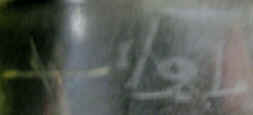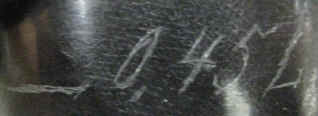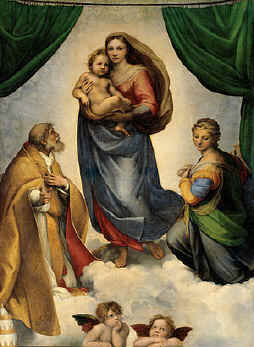

We collectors look for old steins, beautiful steins, rare steins, valuable steins, steins in certain categories or by certain manufacturers or artists, etc. But also, we all look for bargains.
It was a "60% off" sign in a case in a Phoenix, AZ shop that got my attention, and inside it was a rather interesting 1/2L pressed glass stein with a porcelain inlay. It was curious to see a religious theme on a stein that is only 100-plus years old. Also, the mounting seemed unusual -- almost like a church window. I wonder if that was intentional.
And, when we got back to the motel, and I took off the price tag to clean it, there were two surprises. For one, I realized that I (and the store clerk) had misread the price; it was still a fine bargain, but not the steal I had thought.
The other surprise, and the primary reason for this writing, was noticed by Ellaine: there are two different capacity marks. To the left of the handle is 1/2L, and 0.45L to the right. What's up with that?


So, next morning we opened up the shop, to set things right, and met the owner -- a friendly, talkative fellow who expressed considerable gratitude for our ethical dealing. As we often do, I asked if he recalled where he got the stein. He is from Lowville, NY, a small upstate town. There were a lot of German farmers in the area, and he thought he got it from cold-calling there, as he used to do.
By the time we saw him again, several months later, he realized he had been mistaken. He had a house-cleaning service in San Francisco, and had been employed by two gentlemen, but lost touch when one of them became very ill and later died. There was a chance encounter with the other man some time later, who said he had some things for him, left by his friend. Among them was this stein.
Both good stories, don't you think?
Now, about the image on the inlay.
It is a copy of the Sistine Madonna, also known as Madonna di Sisto, an oil painting by Raphael. It was commissioned by Pope Julius II in 1512, as an altarpiece for the basilica of San Sisto Piacenza, a Benedictine monastery, in honor of his uncle, Pope Sixtus IV. The family required that the image include Saint Barbara and Saint Sixtus (Pope Sixtus I).
 It was purchased from the monastery in 1754 by Augustus III, Elector of Saxony and King of Poland,
and relocated to Dresden. It is said to have had an important effect on German art. There is some
thought that it is the world's greatest painting, and is said to have influenced Goethe, Wagner and Nietzsche.
Dostoyevsky called it, "the greatest revelation of the human spirit."
It was purchased from the monastery in 1754 by Augustus III, Elector of Saxony and King of Poland,
and relocated to Dresden. It is said to have had an important effect on German art. There is some
thought that it is the world's greatest painting, and is said to have influenced Goethe, Wagner and Nietzsche.
Dostoyevsky called it, "the greatest revelation of the human spirit."
Locked up in a vault, it survived the WWII fire bombing of Dresden, ending up in Moscow, and in 1946 was exhibited at the Pushkin Museum. But in 1955, after Stalin's death, the Soviets returned it to Germany. It is now at the Gemaldegalerie Alte Meister in Dresden, where a 2012 exhibition celebrated its 500th birthday.
Art historians go on and on (and on) about Raphael's technique, and about what he meant to express. All this is available on the Internet and, rather than restating professional opinion, I'll just say this: to me the images of mother and child are gorgeous, unusual, ambiguous, mysterious and profound. If you spend time with this painting, it will move you.
Thanks to various internet sites for art history and opinion. Thanks to John Piet for taking the pictures, identifying the image on the inlay, and encouraging me to do the writing.